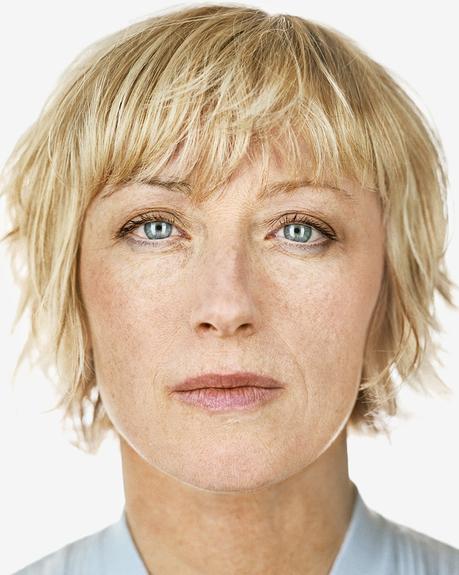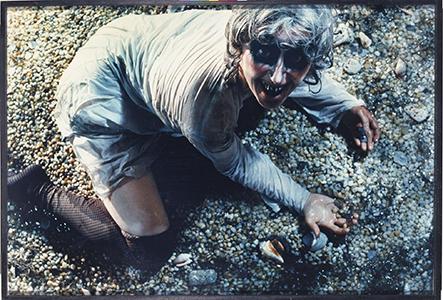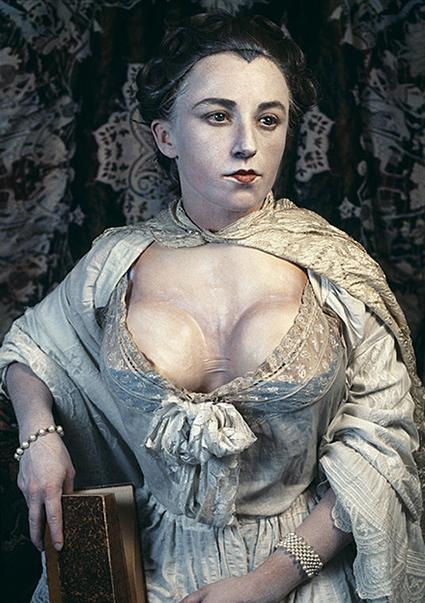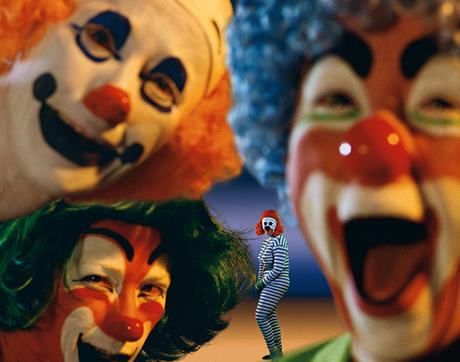
A camera, a prop and herself were all the raw materials Cindy Sherman needed to add her name to the roll call of great photographers of the second half of the 20th century … although she considers herself a visual artist whose medium is photography rather than a photographer per se.


What's unique about this artist is that not only does she use her lens to capture staged images that are striking and highly unusual in themselves but that she uses herself in her compositions and thereby embodies her intended message.


Born in New Jersey in 1954, Cynthia Morris Sherman felt no artistic leanings until at Buffalo University where she began to paint but soon realised that this wasn’t her thing and about which she says: “ ... What can I say? There I was, knocking myself out copying other art but then it hit me that the best and only way I could realize my ideas was with a camera.” And, indeed, it was in photography that she found her calling and has since become one of the most outstanding photographers of her time.


Her earliest photographs, arguably the most representative of her work, soon captured the public’s imagination. Between 1977 y 1980 she produced the "Untitled Film Stills" series of self-portraits posing as typically female clichés from a patriarchal society (hooker, housewife, drug addict, dancer, termagant). These black and white images bring to mind film stills from the 40’s and 50’s. To see them is to recall Hitchcock, Visconti and Truffault, to think how familiar they seem and ask oneself if they might be from an old film noir or Italian Neorealism movie. Since the very beginning, Sherman has never wanted to title her works so they are known only by their inventory number and it is up to the viewer to assign a meaning to each one.


Sherman has no qualms about resorting to artifice, both of expression and in preparation, to sum up a whole narrative in one single picture, leaving it to our own imagination to invent the story behind it.
And, seemingly, it all stems from her love of fancy dress since childhood although she can't tell if that was from boredom, as therapy or simply a fascination with make-up. What happened was that she had started playing with costumes and make-up in the privacy of her own home until, encouraged by her university friend and fellow New York artist Robert Longo, she made the decision to immortalise her "performances" on camera.


Although she doesn't consider her work feminist as such, her entire oeuvre over the last 40 years does explore myriad female stereotypes. At the start of the 80’s, wanting to draw attention to the prolific use of women as sex symbols in magazines and on television, she produced the "Centerfolds" series, posing as if for a double-page spread in a man's magazine.


All of her work contains a message which sometimes means her having to resort to images that are gut-wrenching. “Disasters”, “Fairy Tales” and “Disgust Pictures” are pieces that, by the most abject means, (namely entrails, vomit, mutations and horror figures), flag up the changes that our society is undergoing, our descent into a ferocious consumerism devouring itself.


In “History Portraits”, Sherman returns to self-portraiture only this time in colour, and revisiting Renaissance and Baroque paintings, recreating both male and female characters and media darlings of the moment. Her aim is to demystify the personalities worshipped by an obsessed society whether they be masterpieces of the art world or celebrities of stage and screen.


Sherman appears in the majority of her pieces because she likes to work alone and do everything by herself, coupled with the fact that hiring models can turn out to be harder work than it's worth ... she tried it once and it was an experience she won't be repeating. She agrees that it's partly for the freedom working by herself affords her but also possibly down to shyness. Disguising oneself as someone else can be liberating and, although it's her face and body one sees, it's deliberately not the essence of her which is why, if ever an image resembles the real life her too much, she scraps it and takes another. She has also experimented with still lifes in which she doesn't appear. These, however, lack the full force of her other work in which she does. And the truth is that collectors after a work by Sherman want it with her in it and are prepared to pay exorbitant amounts for the acquisition. Her Untitled #96 sold at auction for nearly $4, 000, 000 in 2013 at Christie's in New York.

This woman of a thousand faces sees herself as a blank canvas on which to depict diverse iconographies of 'woman' and the result is, in the words of Eva Respini, the curator who organised Sherman's retrospective at the MoMA in 2013, "an encyclopedia of female stereotypes." Her photographs are not at all autobiographical but they do, on occasion, and by way of artificiality, appear to capture reality in all its crudeness.


As her work evolves, however, so Sherman replaces herself gradually more and more with prosthetics similar to those used at medical schools. By the time she starts work on the “Sex Pictures” series, there's nothing at all left of her in them and the models appear in her place all twisted, mutilated, oozing liquids and, although we the spectators know that they're only mannequins, we're still left with a queasiness that won't quit, meaning that her aim, that of denouncing whilst depicting male violence against women, has again been achieved.
With the turn of the century, Sherman starts to incorporate digital techniques into her photography, allowing her to create garishly-coloured scenes and multi-charactered montages, as in the “Clowns” series, where it's not exactly clear whether she's parodying herself or not. Framed within opulent settings, the characters brought to life in her “Society Portraits” do not represent real people. The artist has, however, made them look somewhat familiar to us with this rallying cry against the prevailing beauty ideals of a society obsessed with youth and beauty.


Cindy Sherman, one of the most influential figures in contemporary art for some; egocentric, tacky or pretentious for others; a mockery for others still; but oozing empathy for yet more. Suffice it to say that all you have to do to get a sense of her sincerity is just watch how she holds the spectator's rapt attention in the majority of her portraits.
Or is it a challenge that she engages us with?Only the emotional response that is triggered within each individual will have an answer and the final say on that.
{youtube}UXKNuWtXZ_U|600|450{/youtube}

















(Translated from the Spanish version by Shauna Devlin)
- Cindy Sherman: Biography, works, exhibitions - - Alejandra de Argos -

